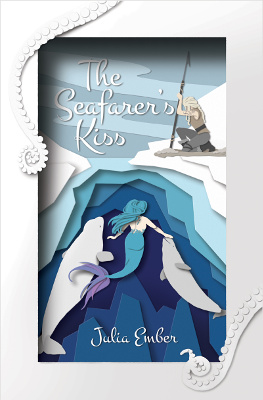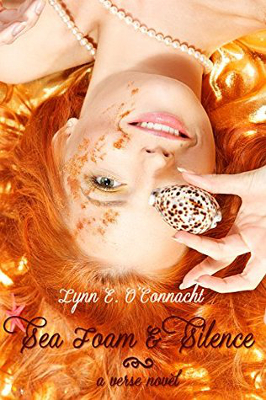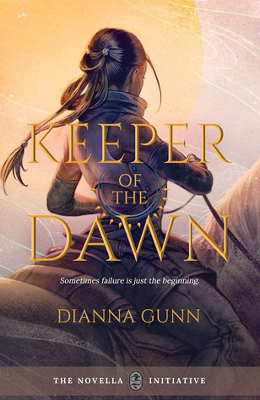 Series: Wayward Children, #1
Series: Wayward Children, #1
First Published: 5th April, 2016
Genre: Urban Fantasy / Novella
Available: Amazon.com | Amazon UK
Nancy has spent the last few years in the Halls of the Dead, an underworld where stillness is valued. When she returns, she ends up at a boarding school for other teenagers like her, who are longing to return to their worlds.
Contrary to the book’s official description, it’s not about children who are spat out by their portal worlds when their potential is used up. Some can return to their worlds if they find another door. Some will go back and forth many times. Which is a pity, because I liked the idea of draining children of their miracle powers like some sort of portal world vampire, but there you go.
There’s obviously a deeper system going on here, with the worlds mapped out in directions like Nonsense and Logic, but this never really gets developed. Most of the interesting setup is dropped once the murder mystery begins. Speculative murder mysteries are my thing, but this one really didn’t work for me. I figured they’d go around finding out about everyone’s worlds, in the hopes of finding clues to the killer. What actually happens is they don’t do a lot of investigating, ignore the very obvious clues, then have the answer fall into their laps at the end. Note that this is a darker mystery, so the deaths are gory and the bodies are described in detail.
Nancy is a romantic asexual person. The book attempts to explain asexuality in basic terms, but in a way that is impersonal to Nancy. It’s like a definition for someone who hasn’t heard of asexuality. Which makes it a problem when asexuality is being defined as not having a desire for sex, rather than not feeling sexual attraction. This is true for Nancy, but not for all asexual people, so it would have been better if she’d made the description personal.
The discussion of romance is rather more confused. She makes it clear she did enjoy dating when she was young enough that there wasn’t pressure for sex. She directly states she’s not aromantic. Then she goes on to describe people as being like paintings, so she doesn’t want to date because she wouldn’t date a painting. In other words, she doesn’t get into romantic relationships with people she’s not sexually attracted to, which is no one, so therefore she doesn’t date. I’m not really sure what all that was about. Maybe Nancy was confused. Maybe the author was confused. I couldn’t tell which.
However, my biggest issue with her asexuality is that it’s portrayed as a bigger problem than having returned from the Halls of the Dead. Her parents push her to date and she thinks it’s inevitable in relationships that she’ll be pressured into sex. Nancy was put into sexually awkward situations just to show her being uncomfortable, like her roommate wanting to know if Nancy wanted sex with someone, and if she could masturbate whilst Nancy was in the room. The overall feel is that it would be impossible for Nancy to exist in society as an asexual person, and so she turns her back on society.
There’s an attempt to distance Nancy’s death and stillness from asexuality, by saying a lot of people in the Halls of the Dead were sexual. Which would work better if being asexual wasn’t a reason for her to want to return there and retreat from society forever.
Nancy states she doesn’t have an eating disorder, but that’s not how it looks. She’s attempting to survive on the food that sustained her in the Halls of the Dead. That means mostly fruit juice. It’s a fantastical eating disorder for an unusual reason, but she’s still restricting her portion sizes, and this is still going to kill her. However, as it isn’t addressed as an eating disorder, there aren’t any downsides. It’s shown as rather ethereal and mysterious, which was getting a little too close to glamourising eating disorders for my liking.
One of Nancy’s new friends is Kade, who is a trans boy. He was kicked out of his world when they realised he wasn’t a girl, his parents rejected him for it, and he also faces bigoted comments at the school. The anti-trans themes weren’t unrealistic, but were rather a downer, especially considering he’s the only one who couldn’t have the happily-ever-after of going back to his perfect world.
Jack and Jill are identical twins. It avoids some tropes (they’re not telepathic linked or treated as being identical people), but does fall into others (when one twin is good the other must be bad).
There are a few non-white characters. Sumi is Japanese. Christopher is Latino. The former doesn’t get much development time, it grated that she constantly called people stupid, and I didn’t like how her story ended. The latter has some development, though I noted his world was rather Day of the Dead, linking the world to his roots in a way that doesn’t happen for the white characters. These characters exist, but it’s the white characters who are centred.
There’s an attempt to make the school mostly being girls sound less binary by blaming it on imposed gender roles, but this didn’t work for me. Nothing about “boys will be boys” would stop them disappearing through a door in an instant. It’s possible this was intended to sound ridiculous, and Kade’s experiences would suggest the portal worlds prefer girls because they’re bigots rather than there being a real gender difference. But no character challenges this at all.
Also, I never did like the trope that adults are so vastly different from children, except for old people who are just like children. This is used to justify why adults (except for old adults) can’t cope with nonsense.
I liked the concept for this a lot more than the actual story. It’s a great idea. There’s some lovely writing in places and some of the worlds were very imaginative. But it doesn’t really come together as a whole. The inclusion reads too much like it’s there to explain terms for people who don’t know them, and has some implications I don’t like very much. This is tied up in a murder mystery that isn’t very mysterious.
 First Published: 4nd May, 2017
First Published: 4nd May, 2017 First Published: 9th June, 2016
First Published: 9th June, 2016 First Published: 2nd May, 2017
First Published: 2nd May, 2017 First Published: 18th April, 2017
First Published: 18th April, 2017